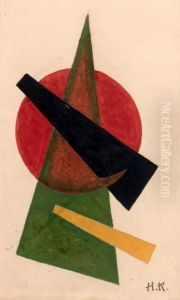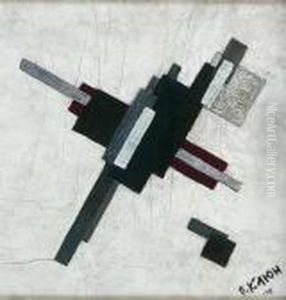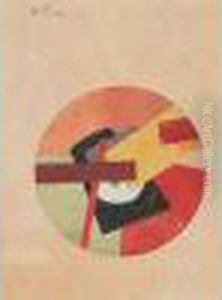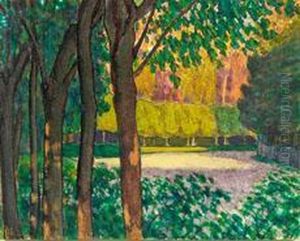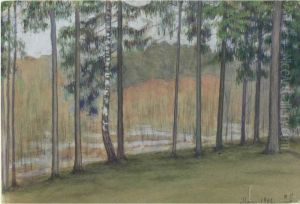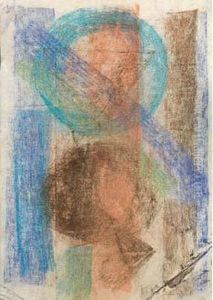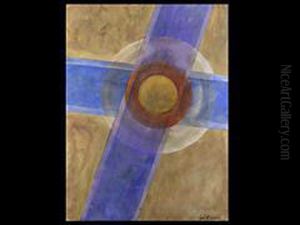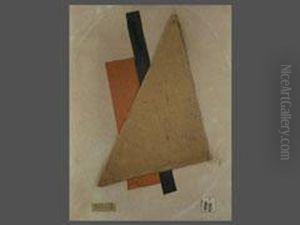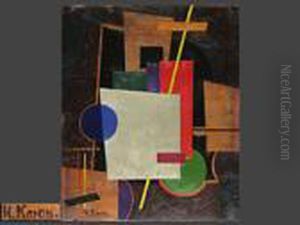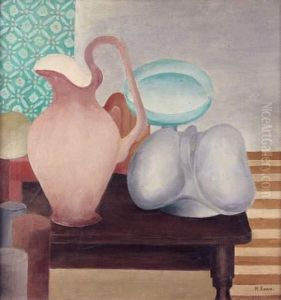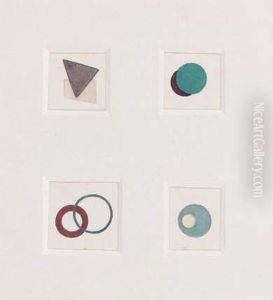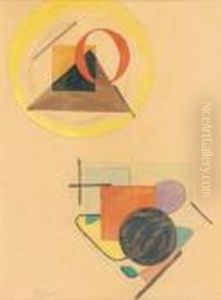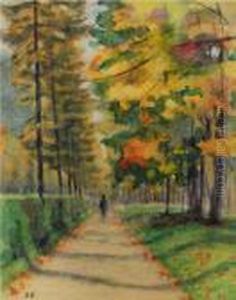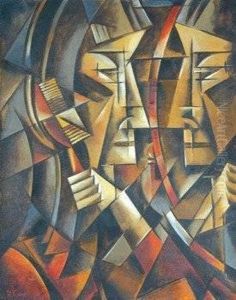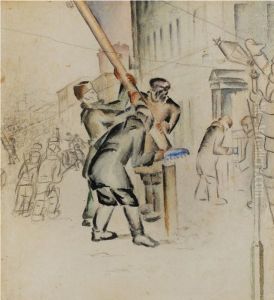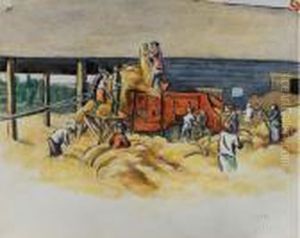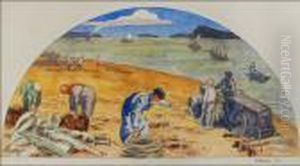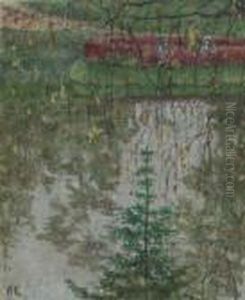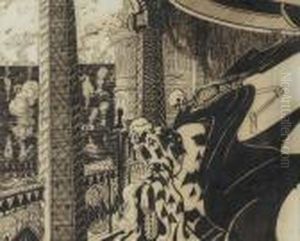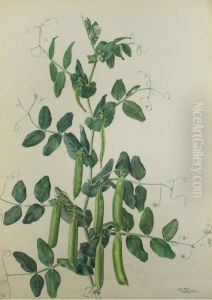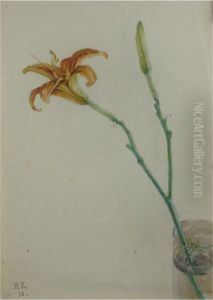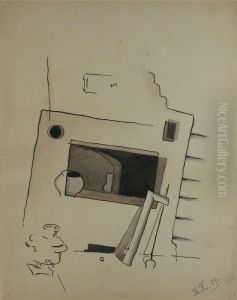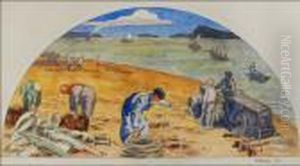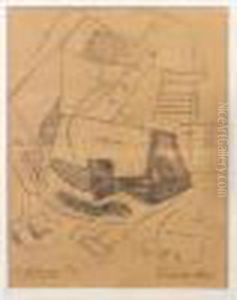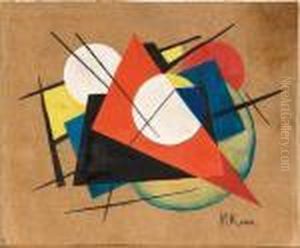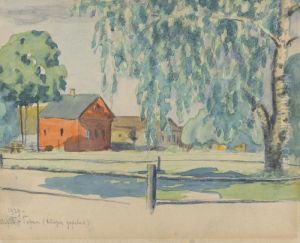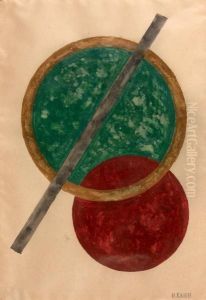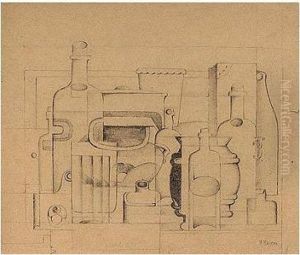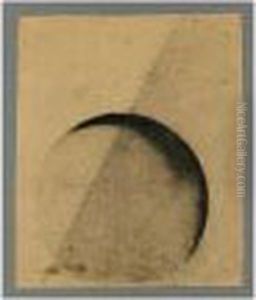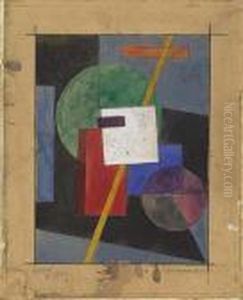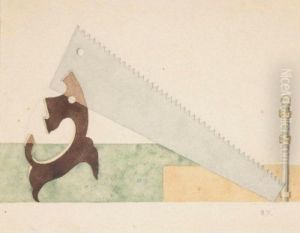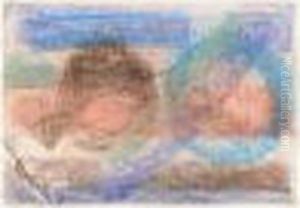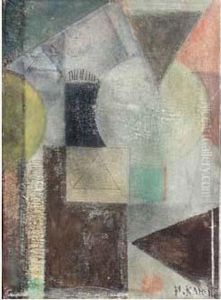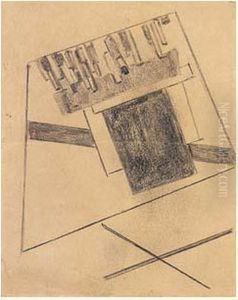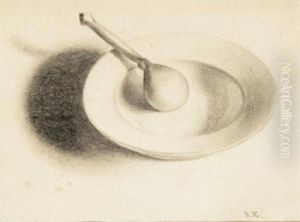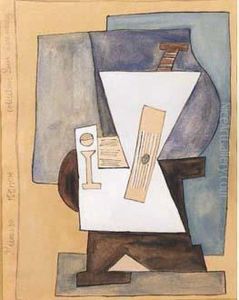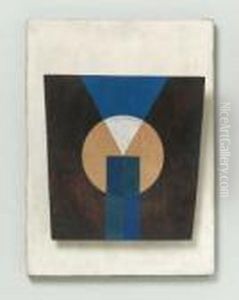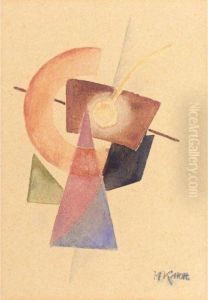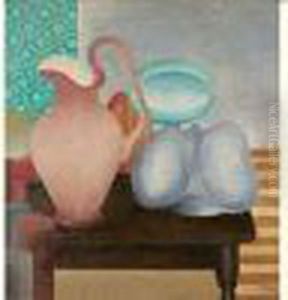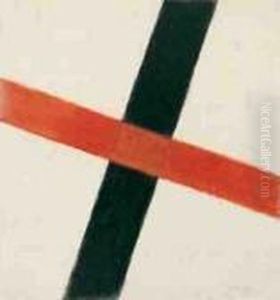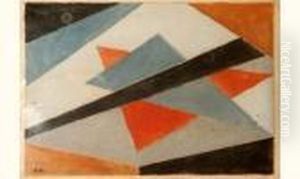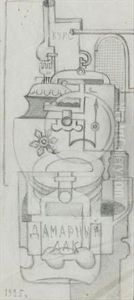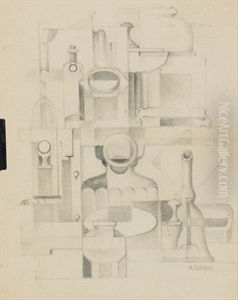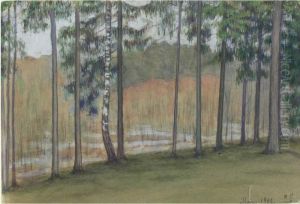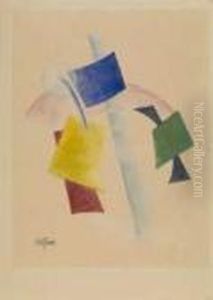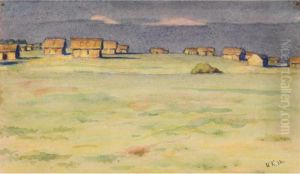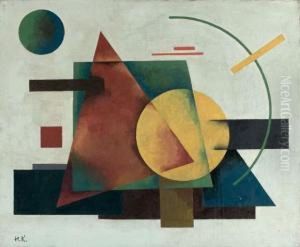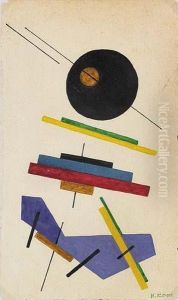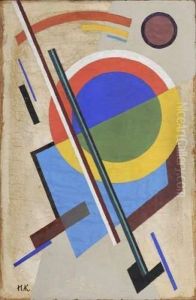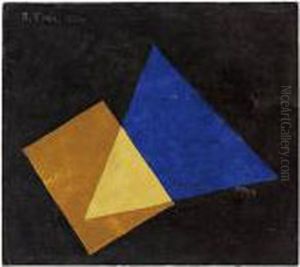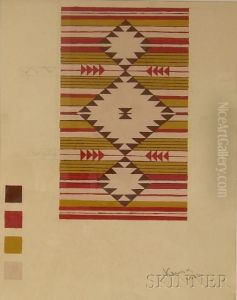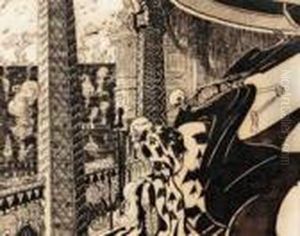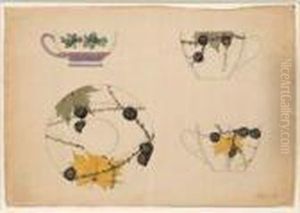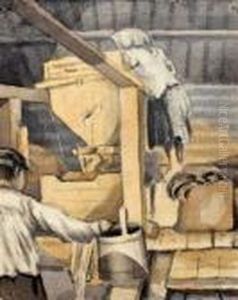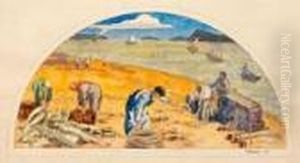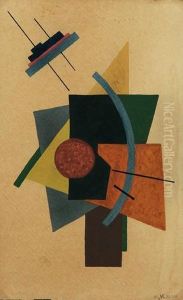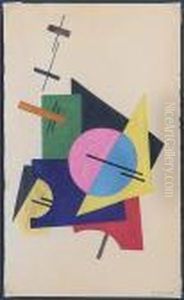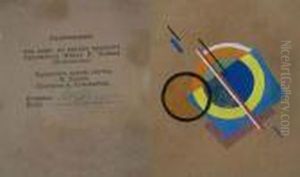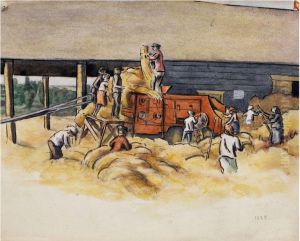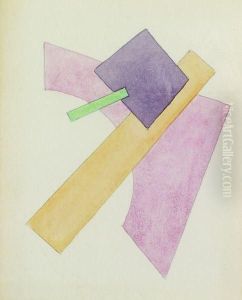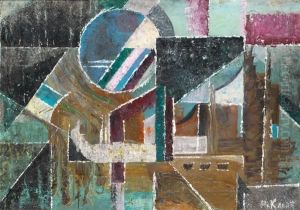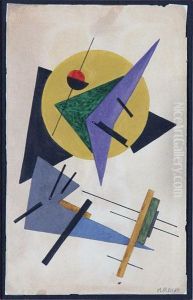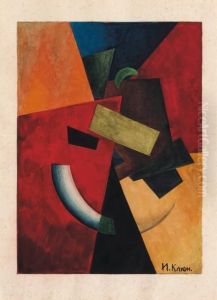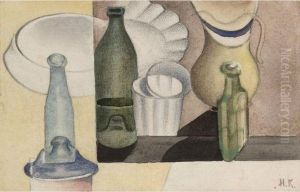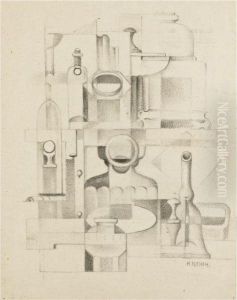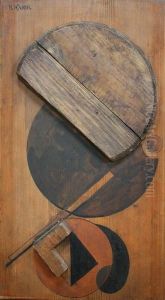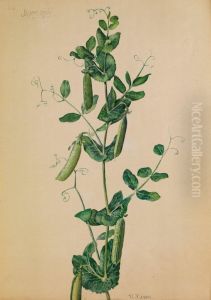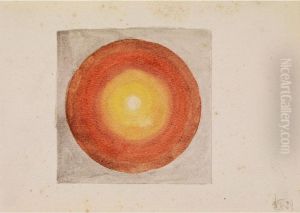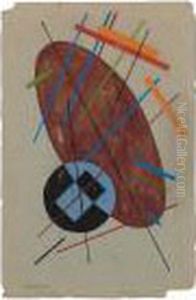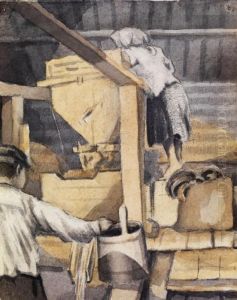Ivan Klioune Paintings
Ivan Klioune, also spelled as Ivan Klun or Ivan Klyun, was a Russian avant-garde artist, painter, and art theorist associated with the Suprematist movement, which was founded by Kazimir Malevich. Born on September 1, 1873, in Bolshie Gorki, near Moscow, Klioune originally studied engineering before turning his attention to art.
Although he started his artistic career later in life, he quickly became involved in the burgeoning Russian avant-garde scene. In 1907, he moved to Moscow and began studying painting, eventually enrolling in the Moscow School of Painting, Sculpture, and Architecture. His early works were influenced by Impressionism and Symbolism, but he soon became interested in the abstract and geometric forms that were gaining prominence among his contemporaries.
Klioune was deeply influenced by Kazimir Malevich and became one of his closest collaborators after meeting him in 1915. He was involved in the 0.10 Exhibition in 1915, which was one of the seminal events in the development of Suprematism. His works from this period are characterized by the use of simple geometric shapes and a limited color palette, focusing on the exploration of pure artistic feeling rather than representational content.
During the 1920s, Klioune became involved in teaching and continued to develop his ideas on art theory. He taught at the Vkhutemas (Higher Art and Technical Studios) in Moscow, where he influenced a new generation of artists. His theoretical work, including writings on the Suprematist philosophy, contributed to the intellectual foundation of abstract art in Russia.
The political climate in the Soviet Union during the 1930s became increasingly repressive, and Klioune, like many of his contemporaries, faced difficulties due to his avant-garde associations. Despite this, he continued to work, although his style became more representational, in line with the state-sanctioned Socialist Realism.
Ivan Klioune died on December 13, 1943, in Moscow. While his contributions were overshadowed during his lifetime by more prominent figures like Malevich, his work has been reassessed posthumously, and he is now recognized as a significant figure in the Russian avant-garde movement. His legacy is preserved in his paintings, theoretical writings, and influence on future generations of artists.
